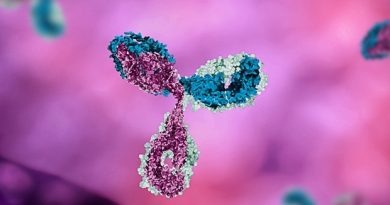Leadless Endocardial LV Pacing: Another Way to Extend CRT’s Reach
A leadless, partially subcutaneous left ventricular (LV) pacing system that can deliver cardiac resynchronization therapy (CRT) when added to dual-chamber pacing, already available in Europe, continues its quest for regulatory approval in the United States.
Patients with standard CRT indications who didn’t respond to the treatment or weren’t able to receive a full biventricular (BiV) pacing system with an LV lead in the coronary sinus, responded well over 6 months — with improved LV function, symptoms, and quality of life — after being fitted with the WiSE CRT system (EBR Systems) in a prospective study.
The device adds another dimension to trends away from pacing therapy that depends on transvenous and intracardiac leads, with their potential for infection, permanence if extraction is problematic, and other baggage. The shift has been exemplified by the Micra AV (Medtronic) leadless pacemaker, which can provide atrioventricular (AV) synchronous pacing from its right ventricular (RV) implantation site.
The WiSE CRT system gained the CE mark 6 years ago in Europe, where it already has an extensive postmarket experience. It’s designed to work with a separately implanted dual-chamber pacemaker and lead system but can, potentially, be paired with a Micra to achieve completely lead-free CRT.
The system features a subcutaneously implanted, battery-driven pulse generator that transmits energy via ultrasound to a receiver-electrode implanted in the left ventricle, which turns the ultrasound energy into pacing stimuli.
The current findings come from the first 31 patients to receive the WiSE CRT system in the nonrandomized “roll-in” phase of the SOLVE-CRT trial, which is also entering a separate cohort randomized to be implanted with the system with its functions turned on or off.
The early experience has shown that the subcutaneous and endocardial implantation procedure is “safe in the hands of new centers” lacking experience with the device, and provides the reverse-remodeling and clinical benefits that are the goal of standard CRT, Jagmeet P. Singh, MD, DPhil, Massachusetts General Hospital, Boston, told theheart.org | Medscape Cardiology.
Entrants to the study, he noted, included a group that didn’t show functional or symptomatic gains after 6 months of standard CRT, some not meeting guideline-directed CRT eligibility criteria, and others with planned upgrade to CRT but with high-risk challenges, such as comorbidities or abandoned coronary sinus leads.
Those who hadn’t responded to standard CRT went on to improve modestly using the WiSE CRT system, but it was those experiencing resynchronization therapy for the first time that benefited the most, observed Singh, who presented the results July 29 at the Heart Rhythm Society 2021 Scientific Sessions, held virtually and on-site in Boston. He is also senior author on its same-day publication in Heart Rhythm.
“This appears to be a very exciting new approach to leadless, site-selective LV endocardial stimulation,” said Jeremy N. Ruskin, MD, Massachusetts General Hospital, as an invited discussant following Singh’s presentation. “It looks like — if this technology holds up in larger series, in controlled trials — that it may be a very viable option for up to half of patients who are either CRT nonresponders or not treatable by CRT.”
Advances that sharpen patient selection might help determine whether or not the device is successful, proposed Roderick Tung, MD, University of Chicago Medicine, also an invited discussant. Currently, the definition of failure on or nonresponse to conventional CRT is a “moving target,” in that it can vary with the skill and judgment of different operators striving, for example, to successfully position a coronary sinus lead.
Of the 31 patients implanted with the WiSE CRT system at 19 centers, predominantly in the United States, but also in Australia and the United Kingdom, one underwent heart transplantation a month later, leaving 30 for 6-month echocardiographic follow-up.
Together, they showed highly significant improvement in multiple domains of the Kansas City Cardiomyopathy Questionnaire (KCCQ), including clinical and overall summary scores and six of eight other areas that involved symptoms, social limitation, and quality of life.
None of the patients declined in NYHA functional class over the 6 months, and 14, or about 47%, improved by at least one NYHA class.
| Mean LVEF and LV Volumes at Baseline and 6 Months in SOLVE-CRT | |||
| Endpoint | Baseline | 6 Months | P Value |
|---|---|---|---|
| LVEF (%) | 28.3% | 33.5% | <.001 |
| LV end-systolic volume* | 134.9 mL | 111.1 mL | .0004 |
| LV end-diastolic volume | 185.4 mL | 164.9 mL | .0017 |
| *Primary efficacy endpoint |
There were three device-related complications, for a rate of 9.7%, Singh reported. They included one instance of insufficient LV pacing, one embolization of an unanchored LV electrode, and one skin infection associated with the subcutaneous implant.
Singh described the patients’ antithrombotic regimen during the discussion after his presentation of SOLVE-CRT. Those not on oral anticoagulation therapy are “loaded with clopidogrel and aspirin just 12 hours prior to the procedure,” he said. Heparin is added during the procedure, and the dual-antiplatelet therapy is continued for 6 months.
Patients who are on oral anticoagulation therapy, he said, stop taking it 2 to 3 days before the procedure and are put on dual-antiplatelet therapy for 6 months. They are heparinized for the procedure, after which they resume oral anticoagulation.
“The regimen is pretty sorted out,” Singh noted. “There’s been a fair amount of experience that this works well.”
SOLVE-CRT is funded by EBR Systems. Singh discloses consulting for Abbott, Biotronik, Boston Scientific, CVRx, Cardiologs, EBR Systems, Impulse Dynamics, Implicity, Medtronic, Microport, New Century Health, Nopras, Orchestra BioMed, and Sanofi. Disclosures for the other authors are in the report.
Heart Rhythm. Published online July 29, 2021. Full text
Heart Rhythm Society (HRS) 2021 Scientific Sessions: Abstract LBCT02. Presented July 29, 2021.
Follow Steve Stiles on Twitter: @SteveStiles2. For more from theheart.org | Medscape Cardiology, follow us on Twitter and Facebook.
Source: Read Full Article



